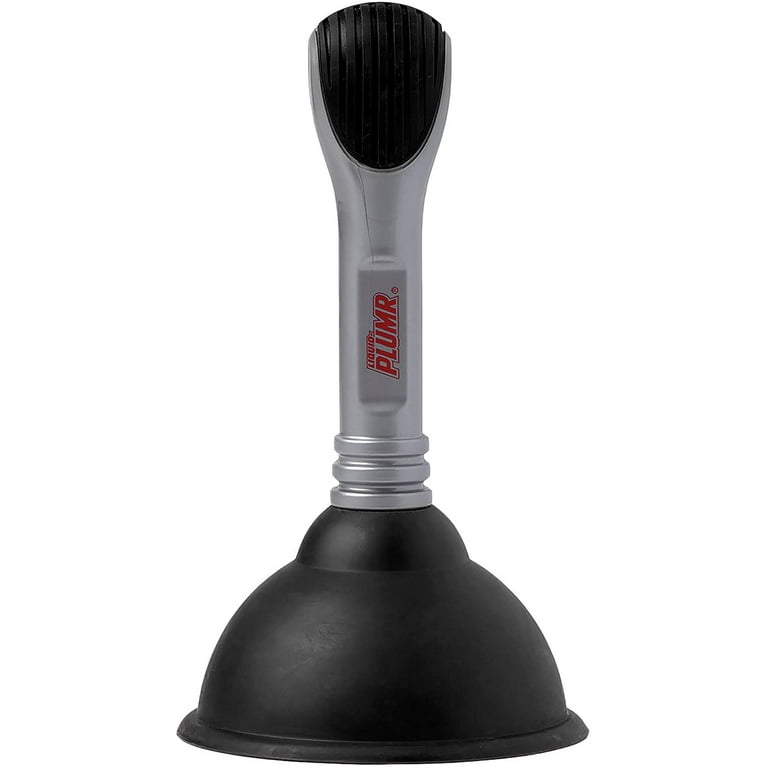Here underneath yow will discover a lot of first-rate information when it comes to How to Use a Plunger to Unclog a Toilet or Drain.

Introduction
Proper maintenance of household drains is essential for preventing clogs and ensuring smooth water flow. One of the key tools in every homeowner's toolkit is the plunger, alongside various drain cleaners designed to tackle stubborn clogs effectively. This article explores how to use plungers and drain cleaners effectively to keep your drains flowing freely.
Section 1: Understanding Drain Cleaners
Types of Drain Cleaners
Drain cleaners can be chemical or enzymatic. Chemical cleaners use strong chemicals to dissolve clogs, while enzymatic cleaners use natural enzymes to break down organic matter.
How Drain Cleaners Work
Chemical cleaners react with clogs to dissolve them, while enzymatic cleaners break down organic materials like hair and grease without harming pipes.
Safety Considerations
Always wear gloves and eye protection when using chemical drain cleaners. Ensure adequate ventilation and follow manufacturer instructions carefully.
Eco-Friendly Alternatives
Consider using vinegar and baking soda or enzyme-based cleaners for eco-friendly options that are safer for pipes and the environment.
Section 2: Understanding Plungers
Types of Plungers
There are several types of plungers available, each designed for different types of drains and clogs. The most common types include cup plungers, flange plungers, and accordion plungers.
How Plungers Work
Plungers work on the principle of creating pressure and suction to dislodge clogs. When properly applied over a drain, they create a vacuum that can pull out debris or break up blockages.
Choosing the Right Plunger
Selecting the right plunger depends on the type of drain and the nature of the clog. Cup plungers are ideal for sinks and tubs, while flange plungers are better suited for toilets due to their design.
Common Mistakes with Plungers
Avoiding these mistakes ensures effective plunging: improper seal around the drain, insufficient force, and not clearing surrounding debris.
Section 3: Using Drain Cleaners Effectively
Application Techniques
Pour chemical cleaners directly into the drain opening. Allow them to work for the recommended time before flushing with hot water. Enzymatic cleaners should sit overnight.
Precautions
Avoid mixing different types of cleaners, as this can produce toxic fumes. Never use chemical cleaners in conjunction with a plunger, as splashing can occur.
Handling Stubborn Clogs
For persistent clogs, consider using a plumbing snake or calling a professional plumber to prevent damage to pipes.
Section 4: Using Plungers Effectively
Preparation
Before plunging, ensure the plunger covers the drain completely and forms a tight seal. Clear any visible debris around the drain opening.
Technique
Start with gentle plunging motions to build suction. Increase pressure gradually, using a steady rhythm. Repeat as necessary until the drain clears.
Troubleshooting Tips
If plunging doesn't work, try adjusting the seal, applying petroleum jelly for a better seal, or using a different type of plunger.
Conclusion
In conclusion, understanding how to use plungers and drain cleaners effectively is essential for maintaining healthy plumbing systems. By choosing the right tools and techniques, homeowners can tackle minor clogs and prevent major plumbing issues down the line.
How To Properly Use A Plumbing Snake To Clear Drains
When any drain clogs in our home arise, we tend to gravitate toward the plunger and little else. In cases where the plunger and its vacuum-created pressure are not able to clear clogs, many immediately move to harmful chemicals or simply call their plumber to fix the issue.
we’re happy to help with all drain cleaning needs and concerns. This includes informing you on a few other home remedies you may have at your disposal for minor to moderate clogs, one of which is the use of a plumbing snake. Many people have never used one of these before – let’s go over the steps to take when your drain clogs and you have a plumbing snake available.
Attempt Plunger Use
The first step here, as we noted above, should indeed be to grab your plunger when you notice a drain clog and attempt to resolve it this way. If you’re unsure how to use a particular type of plunger, our plumbers can answer any questions you have. If this doesn’t do the trick, however, you move on to the snake.
Locate And Prepare Snake
A plumbing snake is a metal or plastic device that’s generally about a quarter of an inch thick. It’s design with significant extensions, meant to reach down into your clogged drain and push the clog out. Snakes also contain drain augers that will latch onto and push stubborn blockages.
If your plunger doesn’t clear a clog, locate your snake and bring it to the drain in question. We also recommend keeping a bucket nearby to collect the clog once you pull it out, plus we’d advise wearing goggles and possibly protective gloves.
Feed Snake
Once you’re ready to go, feed the snake slowly down the drain, using the crank device it comes with to keep it moving until it finds the clog. Once this happens, much of the clog will be latched onto the coil so you can pull it out, while the rest will simply break up and flow downward.
Detach Debris
Remove the snake slowly from the drain, and once you’ve done so, pick off any debris that’s stuck to the coil. This is another area where wearing gloves is a must.
Flush Drain
Finally, take a few minutes to ensure the snake has done its job correctly. If you’ve been using it on a toilet, flush the toilet a couple times and make sure everything flows well. If you’ve used it on a different drain, flush it with some room temperature water.
https://www.mybuddytheplumber.com/blog/how-to-properly-use-a-plumbing-snake-to-clear-drains/

As an enthusiastic person who reads on How To Use Your Toilet Plunger Correctly in 5 Easy Steps, I assumed sharing that excerpt was worthwhile. In case you appreciated our blog posting please consider to pass it around. Thank you for taking the time to read it.
Call Today
Comments on “Learn Plungers and Drain Cleaners: Best Approaches”